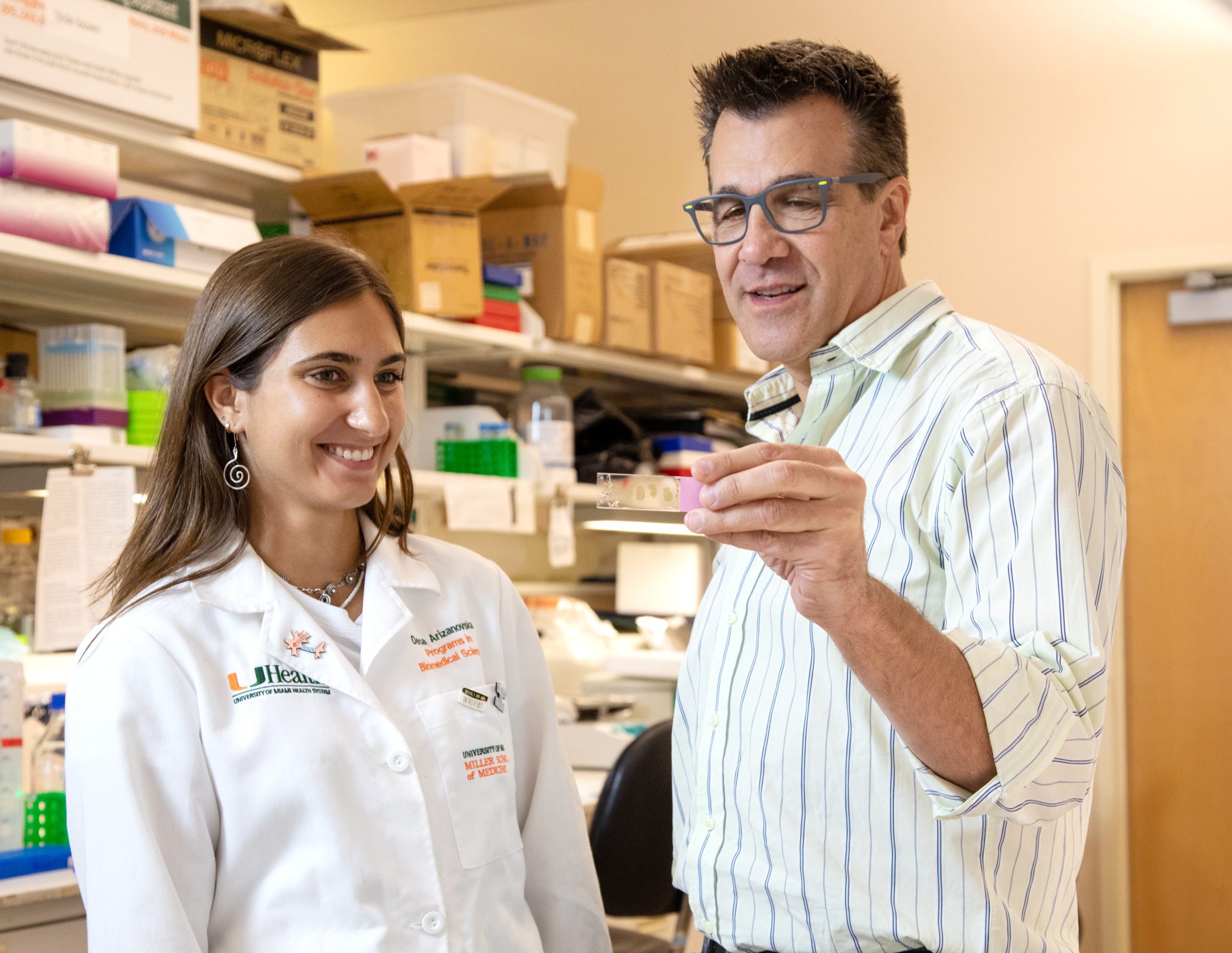(March-2023) Daniel J. Liebl, Ph.D., professor at The Miami Project to Cure Paralysis and co-director of the Miller School of Medicine’s Medical Science Training Program (M.D./Ph.D.), was recently awarded a $2.6 million R01 grant from the National Institute of Health (NIH) entitled “Stabilizing the tripartite synaptic complex following TBI”. This award allows for continuation of a collaborative project between scientists at The Miami Project, Department of Neurological Surgery, and Department of Human Genetics and Genomics. The project will bring to fruition Dr. Liebl’s previous work that identified specific cells, receptors, and molecules—potential therapeutic targets—involved in synaptic loss after traumatic brain injury (TBI).
Dr. Liebl and his team first established an understanding of how a focal TBI results in the reduction of synapses, those distinct cellular units where neurons transmit signals between each other. The genesis for the project came from the observation that TBI induces loss of synapses in brain areas distal to the injury site where cell death, and other traditional measures of injury, previously seemed mildly affected. Each neuron contains many synapses, hundreds to thousands, that are dynamically pruned during development in a consolidation process stabilizing in adulthood. Unless inappropriately reawakened, so Dr. Liebl’s work tells us, by an insult such as TBI. The work began in pre-clinical models by mapping the molecular drivers of synaptic damage. Dr. Liebl and his team leveraged their expertise on neuronal signal transmission that occurs across the tripartite synaptic complex, a functional morphological feature involving two neurons—one conducting the signal and the other receiving—and two types of support cells known as glia. Dr. Liebl’s work established that dysregulation of the molecule D-serine in the synaptic complex contributes to TBI induced loss of synapses in brain regions distant from the mechanical trauma at the injury site. Specifically, the work of Dr. Liebl and his team established that the substantial synaptic damage in surviving cells after TBI occurs due to a reduction in the normal phasic release of D-serine from the primary neurons, combined with an uncoordinated increase in the production of D-serine from glial support cells. Interestingly, D-serine is one of a few “D” amino acids with physiological functions in humans, where “L” amino acids are the building block of our bodies. In a key insight, the team identified that over time that prolonged release of D-serine binds to specific receptors on the outskirts of the synapse, activating a process biologically intended to coordinate synaptic pruning in early life but that is improperly turned on by D-serine in TBI. Importantly, they showed too that experimental inhibition of D-serine production or release by glia holds off the synaptic damage and loss that occurs after TBI.
With the players and the process identified, the team will now develop therapeutics to target synaptic loss after neurotrauma. In collaboration with neurosurgeons, it is already confirmed that the same molecular machines are involved in humans as in the pre-clinical models used to establish the understanding. Now the work will be expanded in continuing collaboration with neurosurgery to confirm calibration of the models and move toward a pharmaceutical agent to target this now well-defined mechanism.

